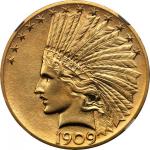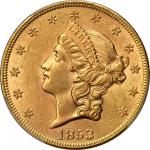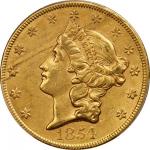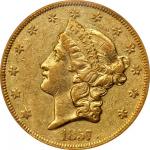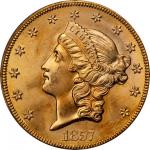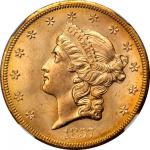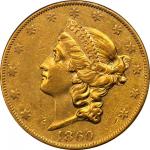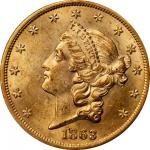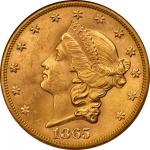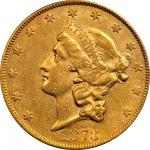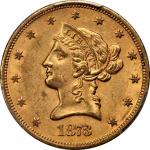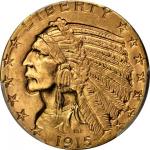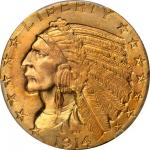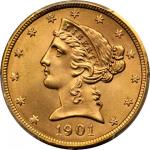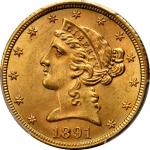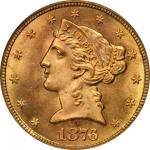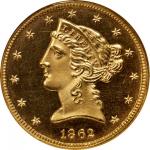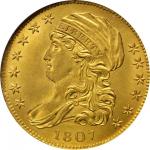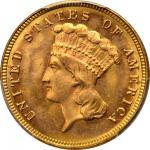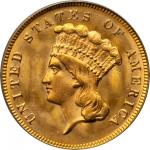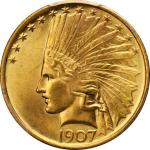This delightful example has handsome golden yellow surfaces and vibrant mint luster. It is predominantly satiny, although subtle frost can be seen as the coin rotates under a light. The strike is impressive with the obverse suitably bold for the issue and the reverse razor sharp throughout. The preservation is very close to Superb Gem. This first-year Indian eagle would make an impressive addition to a stellar quality gold type set. The Indian eagle owes its existence to Theodore Roosevelt. A keen student of the arts, in the 1890s while still an up and coming politician, he met famed sculptor Augustus Saint-Gaudens and was inspired by the latter s work. After the assassination of President William McKinley made Roosevelt president, he began a series of progressive domestic policies -- his "Square Deal" -- that propelled America into a world power. The Square Deal proved to be popular and Roosevelt was re-elected in 1904 in a landslide. For his second term, Charles Barber and George Morgan designed an inaugural medal and Roosevelt was unimpressed. He quickly rejected the Mint s initial design and instead was urged to consult with Saint-Gaudens to produce a new medal. While his schedule was too packed for him to personally design the medal, Saint-Gaudens made a preliminary sketch of the design on a napkin and told Roosevelt that he would give the assignment to his young associate, Adolph Weinman. The result of Weinman s work featured a modernistic bust of the president on the obverse and a stylized eagle standing facing left on a rock. The medal met with great praise and impressed Roosevelt enough that he decided to embark on what he referred to as his "pet crime" to completely revamp the designs on America s money. Roosevelt decided to start with the two highest denominations, the eagle and double eagle, and once again enlisted the help of Saint-Gaudens. Even though by this time, cancer had started to take a severe toll on the sculptor, Saint-Gaudens set to work at his Cornish, New Hampshire studio. The obverse design of the $10 featured the head of Liberty derived from his William Tecumseh Sherman Victory Monument in New York City s Central Park. At Roosevelt s request, on the coin Liberty wears an Indian war bonnet instead of the laurel wreath seen on the monument.. The reverse from the 1905 Inaugural medal formed the basis of the reverse design, although here the eagle stands on a bundle of arrows along with an olive branch. In addition, Saint-Gaudens also employed triangular periods to punctuate the statutory legends very similar to those on the Inaugural medal. The first of the new eagles produced were the so-called Wire Rim pieces. These coins did not have a rim to protect the design from wear, but instead the design blended into the edge. In addition, the relief was high, which interfered with stacking. Both of these artistic features unfortunately precluded these coins from being used in everyday commerce. Before the Wire Rim design was eliminated for circulation on July 29, 1907, Roosevelt requested of Secretary of the Treasury George Cortelyou that several hundred of the high relief Wire Rim coins be produced and that they "should be preserved as the work of a great American artist." Less than a week later, on August 3, Saint-Gaudens died. The Philadelphia Mint produced 500 of the Wire Rim eagles in late August-early September 1907 with an additional production run of 42 coins later that year. These coins were distributed as presentation pieces but only after the regular circulation strike coins had been introduced into circulation to prevent price speculation for these special pieces. Sometime during World War I, the 70 examples that remained in government hands were melted down, leaving a net production of 472 Wire Rim coins.Charles Barber had prepared a second version with a standard style rim but with much of the original design intact. A total of 31,550 coins were struck with the Rolled Rim, but it was found that the striking left much to be desired. Government officials decided to head off any possible criticism and all but 42 coins were melted. Roosevelt leaned on the Mint to resolve the issues and get the coin into circulation. Barber prepared another set of dies with several relatively minor but functionally significant modifications. He reduced the depth of the relief of the devices, redesigned the olive branch, adjusted Liberty s hair, and most noticeable to the casual observer, removed the triangular punctuation on the reverse. These adaptations improved the striking quality enough that this design was finally adopted for circulation and 239,406 coins were ultimately produced. Many were saved for posterity and many collectors today have an opportunity to obtain a Mint State example of this historic design. However, many of these coins suffer from a soft strike as well as general mishandling. For specialists who seek exceptional coins for their collections, this issue can be a challenge at the highest levels of preservation. Here is an opportunity to add a stellar example of an issue that is widely considered to be one of the masterpieces of American numismatic art and an enduring monument to Roosevelt s legacy. , Est. $15,000-$25,000

